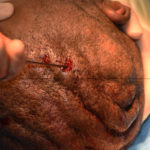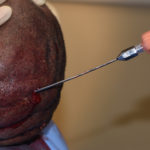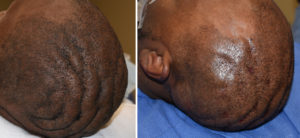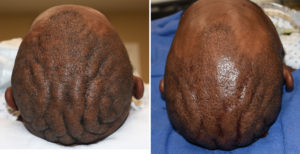One of the most unusual scalp conditions is that of cutis verticis gyrata. (CVG) In this scalp condition, which is associated with an overall thickening of the scalp, linear indentations develop in a sagittal direction across the top of the scalp. Depending on the extent of the involvement a few scalp creases develop to as many as a dozen or more. In large numbers the appearance of the scalp can look like the surface of the brain. (gyrata)While often described as soft and spongy my experience has been that these folds are more often firm and non-compressible. Hair loss is not associated with these indentations despite the scalp fibrosis.
While the scalp condition has been known and described for almost 200 years, its cause remains unknown. It is known to occur much more commonly in men and often begins to develop after puberty. Its progression is slow and the presence of hair often obscures it until much later in life. Because its cause is unknown there is also no known effective treatment. Scalp excision/reduction has been suggested but the fibrotic scalp limits what can be accomplished and the scars are certainly not a good tradeoff. Releasing the indentations (subcision) sounds reasonable but is ineffective if done alone. Injectable fillers also seem a logical treatment but can not be done without subcision as the tissues are too fibrotic. The use of any synthetic injectable filler is not an economically viable one due to the volume of filler needed.



Dr. Barry Eppley
Indianapolis, Indiana



